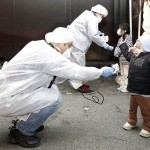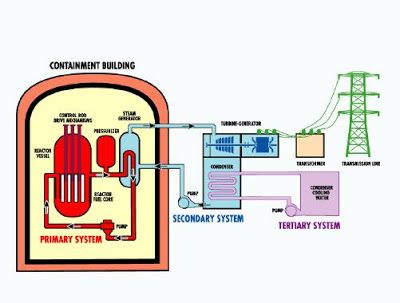The Fake Japanese Nuke Scare
 An explosion at an earthquake damaged nuclear plant in Japan has raised fears of a nuclear incident. How worries should we be?
An explosion at an earthquake damaged nuclear plant in Japan has raised fears of a nuclear incident. How worries should we be?
An explosion at an earthquake damaged nuclear plant in Japan has raised fears of a nuclear incident. But how realistic are the fears?
This dramatic headline blasts out at us from the Drudge Report: "NUKE PLANT EXPLODES."
To the general lay public, what is inferred is that a nuke plant has gone ballistic, creating some kind of thermonuclear explosion along with accompanying mushroom cloud, heat and blast, nuclear fallout, et cetera.
Even a so-called "expert" at the BBC suggests that a nuclear explosion is possible, although he stops short of claiming this is what we are seeing.
Truth be told, this is irresponsible journalism. It is physically impossible for a light water nuclear reactor - the kind used to produce electrical power - to explode.
That being the case, what is it we are witnessing here?
Most likely what we are seeing is either a steam explosion - which is really a mechanical phenomena - or an actual chemical explosion caused by buildup of hydrogen gas or something similar.
This is not to say that a meltdown of the reactor core is not happening - this is actually quite a likely scenario, but does not necessarily equate to the kind of catastrophe witnessed at strong>Chernobyl< in 1986, where a rupture of the reactor vessel and a series of explosions exposed graphite moderator components of the reactor to the air where they ignited. The resulting graphite fire sent a plume of radioactive fallout into the atmosphere and over an extensive geographical area, reaching as far away as Western Europe.
We have had strong>nuclear accidents in the United States<. Most notable was Three Mile Island (TMI) in 1979, but also significant was the less well-known partial meltdown in 1966 at the Enrico Fermi demonstration nuclear breeder reactor (Enrico Fermi-1 fast breeder reactor) caused by a malfunction of the sodium cooling system. Like TMI, no contamination was recorded outside the containment vessel.
The difference between these events and the Chernobyl disaster is that our reactor vessels are located within thick concrete containment structures. At Chernobyl there was no containment - the reactor was located within a sheet metal building - and when the meltdown and resultant explosions occurred, radioactive gases and particles - i.e. fallout - were released directly into the atmosphere.
At TMI, on the other hand, a meltdown occurred, but due to containment, no radioactivity was detected in the surrounding countryside; this despite a deliberate release of radioactive gas to relieve pressure within the plant.
This is not to dismiss the events at the Fukushima-Daiichi plant out of hand. Nuclear technology has definite hazards and requires special safety considerations. What is taking place at this plant is very critical, and a plan should probably have been in place to flood the reactor - perhaps with sea water - given a worst case scenario.
Bottom line: nuclear technology is inherently safe. As an engineer at an American atomic power plant once told me: "All we're doing here is boiling water." It is physically impossible for light water to cause a thermonuclear event, i.e. an atomic explosion.
It's just against the laws of physics for a commercial-grade nuclear reactor to explode - the nuclear fuel is not refined to weapons-grade levels of concentration, like the plutonium found in nuclear weapons.
Consider for a moment all the damage to the environment and to human health caused by fossil fuels over the ages. Death and destruction due to accidents at coal- and oil-fired power plants, petroleum refineries and coal and oil mining operations are simply too high to get an accurate count on.
A boiler explodes at an oil-fired plant in Bangkok, nineteen men are killed, and it doesn't even make the headlines. As a Special Forces Engineer, my training and experience includes a working knowledge of industrial infrastructure, with a focus on the damage that can be wrought to industrial systems via conventional war damage and good old-fashioned sabotage.
The fact of the matter is it's far safer from a statistical point of view to live next to a nuclear power plant than it is to get into your car every morning and drive to work.
Originally published at STORMBRINGER.
Tweet



